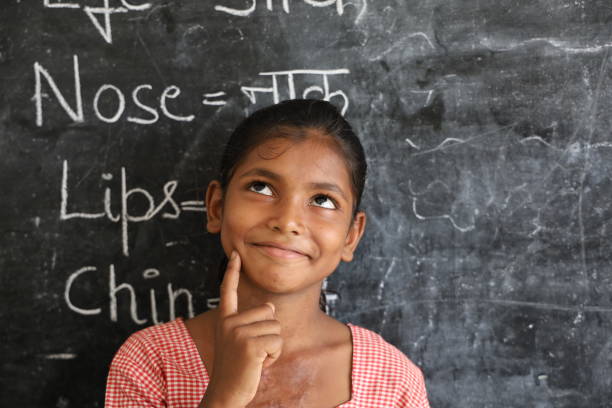In the diverse tapestry of India, where progress and tradition coalesce, Non-Governmental Organizations (NGOs) stand as catalysts for transformative change. One of the most pressing areas demanding attention is girls’ education. This article explores how NGOs in Noida, India, guided by foundational principles, are instrumental in breaking barriers and ensuring a brighter educational future for girls across the nation.
Principles Guiding NGOs in India:
1. Inclusivity:
NGOs operate on the principle of inclusivity, ensuring that their educational initiatives are accessible to all girls, regardless of socio-economic background, caste, or geographic location.
2. Gender Equality:
Promoting gender equality is a cornerstone. NGOs strive to create an environment where girls have the same educational opportunities as boys, dismantling stereotypes and cultural barriers.
3. Community Engagement:
Active engagement with local communities is vital. NGOs work closely with parents, community leaders, and local authorities to garner support for girls’ education and address cultural impediments.
4. Quality Education:
The focus is not just on education but on quality education. NGOs emphasize curriculum improvement, teacher training, and infrastructure development to ensure that girls receive an education that equips them for the future.
5. Health and Well-being:
Recognizing the intrinsic link between health and education, NGOs incorporate health and well-being programs. This includes nutrition initiatives and awareness campaigns on hygiene to ensure girls are healthy and ready to learn.
6. Advocacy for Policy Change:
NGOs actively advocate for policy changes that enhance girls’ education. This involves engaging with government bodies to influence policies that address issues like gender-based discrimination in schools.
7. Empowering Local Leadership:
Building local leadership, especially among women, is crucial. NGOs work to empower women in communities, recognizing them as key influencers in the educational journey of girls.
8. Technology Integration:
Embracing technology is essential. NGOs integrate digital learning tools to make education more engaging and accessible, especially in remote areas where traditional educational resources may be scarce.
9. Monitoring and Evaluation:
Transparent monitoring and evaluation are integral. NGOs regularly assess the impact of their educational programs, ensuring accountability and providing insights for continuous improvement.
10. Sustainability:
Ensuring the sustainability of educational initiatives is paramount. NGOs focus on creating programs that can continue to benefit girls even after direct intervention, fostering long-term educational empowerment.
The Transformative Role of NGOs in Enhancing Girls’ Education:
1. Overcoming Socio-economic Barriers:
NGOs actively work to break socio-economic barriers that often hinder girls’ access to education. By providing financial support, scholarships, and incentives, they ensure that economic constraints do not prevent girls from attending school.
2. Addressing Cultural Stereotypes:
Cultural stereotypes often dictate traditional gender roles, limiting girls’ educational opportunities. NGOs engage in community dialogues and awareness campaigns to challenge these stereotypes, emphasizing the importance of education for both boys and girls.
3. Girl-friendly Learning Spaces:
Creating environments conducive to girls’ learning is a priority. NGOs invest in infrastructure, ensuring that schools have separate and adequate facilities for girls, including sanitation and privacy provisions.
4. Curriculum Enhancement:
Recognizing the need for a curriculum that resonates with the needs and aspirations of girls, NGOs actively work to enhance educational content. This includes integrating subjects that promote gender sensitivity and offering vocational training options.
5. Menstrual Hygiene Programs:
Menstrual hygiene is a significant factor influencing girls’ school attendance. NGOs run programs that provide menstrual hygiene education, sanitary products, and facilities, ensuring that menstruation does not become a barrier to education.
6.Digital Literacy Initiatives:
Embracing technology, NGOs introduce digital literacy initiatives. This ensures that girls are not just consumers but contributors to the digital world, opening up new avenues for learning and skill development.
7. Community Empowerment:
Empowering local communities, especially women, is fundamental. NGOs engage in programs that uplift the economic status of women, recognizing that educated women contribute significantly to the educational aspirations of the entire community.
8. Teacher Training Programs:
Enhancing the quality of education involves investing in teachers. NGOs conduct teacher training programs, especially focusing on gender sensitivity and teaching methodologies that encourage girls’ participation.
9. Advocacy for Girls’ Education Policies:
Advocacy is a potent tool for change. NGOs actively engage in advocating for policies that promote girls’ education, addressing issues like early marriage, child labor, and discrimination within schools.
10. Partnerships for Sustainability:
Ensuring the sustainability of educational initiatives involves building partnerships. NGOs collaborate with governmental bodies, corporate entities, and other stakeholders to create programs that can thrive beyond initial intervention.
Conclusion:
In the intricate dance of progress and tradition, NGOs in India emerge as orchestrators of change, particularly in the realm of girls’ education. Guided by principles that prioritize inclusivity, gender equality, and community empowerment, these organizations navigate cultural nuances to ensure that no girl is left behind. As we envision a future where every girl in India has access to quality education, NGOs stand as beacons of hope, lighting the path towards a more equitable and enlightened society.





Comments